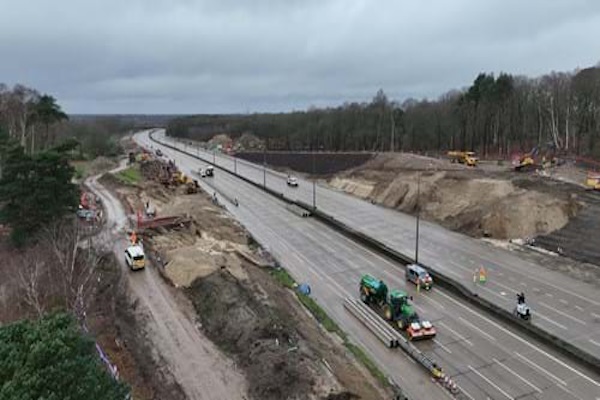The M25 motorway south of Heathrow resumed operations sooner than anticipated after a significant closure, ensuring smoother travel for commuters.
The initial weekend shutdown, intended for bridge demolition, concluded ahead of schedule, thanks to the rapid work by National Highways.
Impact on Travel Plans
During this first weekend closure, travellers heading to prominent locations such as Gatwick, Heathrow airports, and Channel ports were recommended to allocate extra time for their journeys.
Heathrow and British Airways alerted passengers about the potential delays, urging them to plan accordingly. Such cooperation was crucial in minimising disruption.
National Highways’ Efficient Management
National Highways has expressed gratitude towards the public for their patience during this necessary operation. This reopening illustrates their commitment to completing projects efficiently and minimizing inconvenience.
Statements from National Highways highlight their appreciation: ‘We’d like to thank everyone for their co-operation during this closure.’ Such goodwill gestures reinforce public trust in these organisations.
The organisation is aware of the reliance thousands of commuters have on the M25, with its daily traffic reaching up to 6,000 vehicles per hour during peak times on weekends.
Upcoming Closures and Public Advisory
This completion marks the first of several scheduled closures planned until September, as part of the broader motorway upgrade programme.
National Highways plans to provide the public with timely notifications, ensuring that travellers can adjust their routes and schedules well in advance to mitigate any potential issues.
The logistics of managing such a crucial transport route necessitate transparent communication channels between the authorities and the public. These subsequent closures are vital for the planned improvements.
Strategic Importance of the M25
The M25 is one of the key motorways encircling Greater London, and plays a vital role in maintaining the connectivity for commuters and the transportation sector.
Ensuring its efficiency and safety is crucial for supporting local economies and alleviating congestion in this densely populated region.
The planned improvements are integral to the government’s broader transport strategy aimed at fostering more reliable and modernised infrastructure across the UK.
Investment and Future Prospects
The £317 million investment into the M25 not only addresses immediate repair and upgrade needs but also sets the foundation for enhanced transport infrastructure.
Such financial commitments highlight the government’s dedication to improving travel efficiency and safety, demonstrating long-term foresight in public infrastructure.
Future upgrades will likely incorporate advanced technologies, aligning with the UK’s push towards smarter transportation systems.
Community and Environmental Considerations
During such infrastructure projects, careful consideration is given to minimizing environmental impacts and ensuring community safety.
Efforts are made to limit noise pollution and other disturbances that could affect local populations during construction activities.
The approach towards sustainable development is increasingly central to modern infrastructure projects, emphasising a balance between progress and ecological responsibility.
Conclusion of the Project Phase
This reopening phase signals a positive start to a larger initiative aimed at enhancing one of the UK’s busiest motorways.
Continued cooperation between authorities, industries, and the public will be essential for the success of these upgrades, contributing to a more efficient transport network.
The commitment shown by National Highways sets a precedent for future projects and highlights the importance of strategic planning and execution.
The prompt reopening of the M25 highlights the successful execution of planned upgrades, setting a hopeful precedent for upcoming phases.
Efficient project management and public cooperation have been pivotal, illustrating a strong collective effort towards improving national infrastructure.

